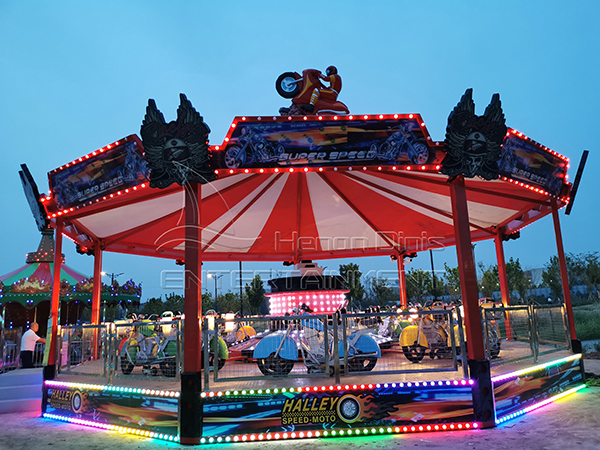Functions of children’s amusement rides
Children’s amusement rides are mechanical structures or devices that are designed to provide entertainment and enjoyment for children in amusement parks, theme parks, carnivals, and other entertainment venues. These rides come in various sizes, shapes, and designs, and are often themed around popular children’s characters or stories. The main function of children’s amusement rides is to provide a safe and thrilling experience that appeals to children’s sense of adventure and curiosity. These rides offer a variety of physical and psychological benefits for children, including exercise, socialization, and sensory stimulation. They also provide an opportunity for children to learn about physics, engineering, and other scientific concepts in a fun and engaging way.

One of the primary functions of children’s amusement rides is to provide physical exercise. Many rides involve physical movement and exertion, which can help children improve their strength, balance, and coordination. For example, rides like the teacups, the merry-go-round, and the swings require children to hold on tight and use their muscles to stay upright and steady.
In addition to physical exercise, children’s amusement rides also offer a range of psychological benefits. These rides provide a sense of excitement and adventure that can help children develop confidence, courage, and a willingness to take risks. For many children, riding a roller coaster or other thrill ride can be a rite of passage that marks their transition from childhood to adolescence.
Children’s amusement rides also provide an opportunity for socialization. Many rides are designed to accommodate multiple riders, which means that children can ride with their friends, siblings, or parents. Riding together on a roller coaster or other ride can be a bonding experience that strengthens relationships and fosters a sense of teamwork and cooperation.
In addition to these benefits, children’s amusement rides also provide sensory stimulation. Many rides feature bright colors, flashing lights, and loud music that can engage children’s senses and stimulate their imaginations. These sensory experiences can be particularly important for children with sensory processing disorders or other developmental challenges.
Overall, the function of children’s amusement rides is to provide a safe and enjoyable experience that promotes physical activity, socialization, and sensory stimulation. These rides offer a range of physical and psychological benefits that can help children develop important skills and qualities, such as strength, balance, confidence, teamwork, and imagination. Whether riding a roller coaster, a merry-go-round, or a teacup, children can have fun and learn at the same time on amusement rides.
